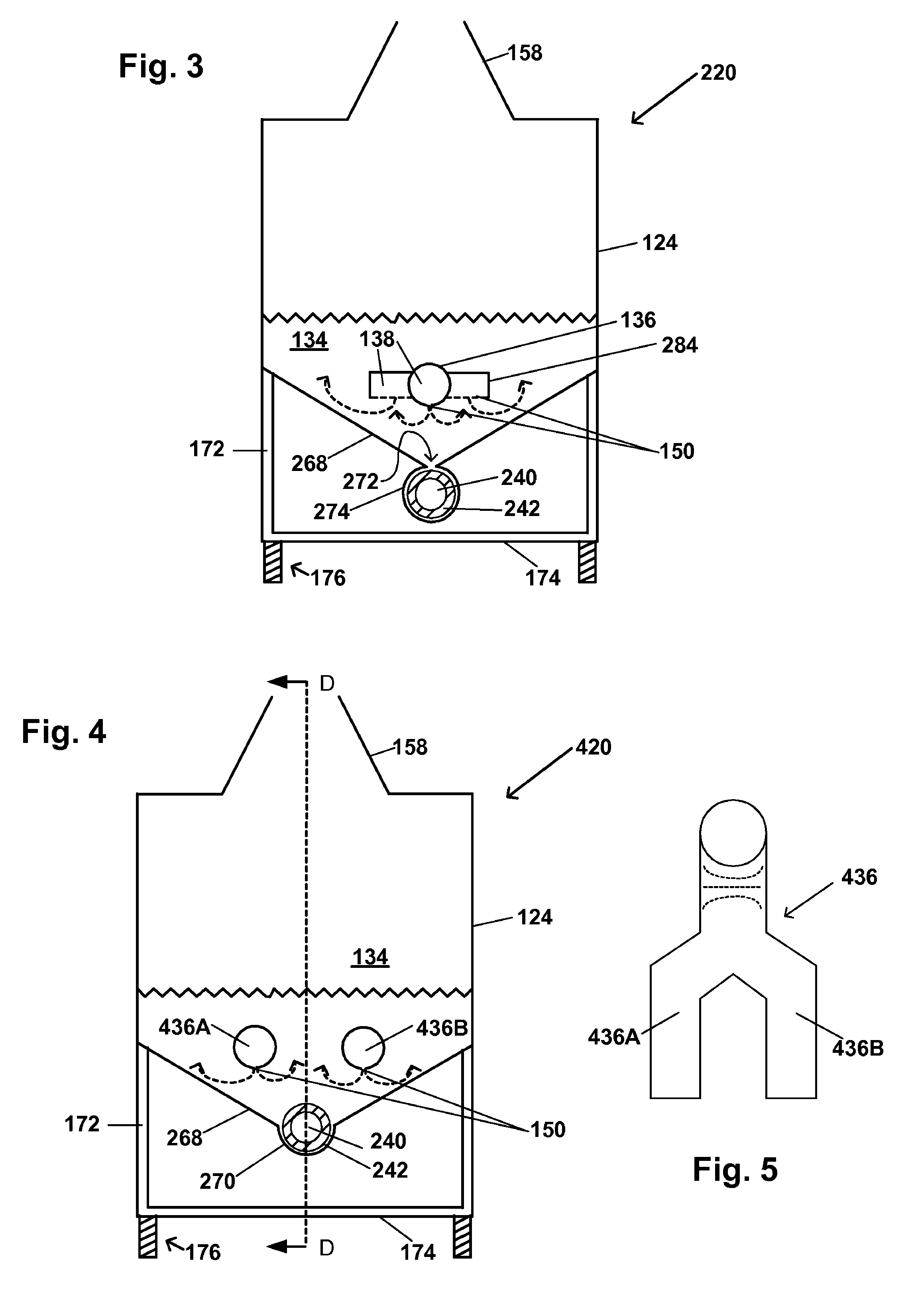Submerged combustion disposal of produced water
a technology of water disposal and combustion, which is applied in the direction of lighting and heating apparatus, separation processes, and ways, etc., can solve the problems of ineffective exhaustion of useable heat directly to the atmosphere with useable heat remaining, inability to efficiently combine high heat transfer rates from fuel to water, and additional agitation, etc., to achieve easy disposal, high evaporation rate, and easy handling
- Summary
- Abstract
- Description
- Claims
- Application Information
AI Technical Summary
Benefits of technology
Problems solved by technology
Method used
Image
Examples
Embodiment Construction
[0039]As used herein, unless otherwise specifically stated, the term “produced water” includes water produced from a hydrocarbon well, e.g., a gas or oil well, whether land-based or offshore, including water escaping or removed from the well at any stage of production, and further includes any other water from any other source, which water needs to be disposed of and cannot be simply poured on the ground, flowed into a waterway, or otherwise put “down the drain” into a sewage or septic system, for reasons such as toxicity, governmental regulations or for any other reason. This definition thus includes water from sources such as landfill runoff and leachate, water from waste disposal sites such as landfills and waste lagoons, water from areas such as airports or parking lots that, once collected, cannot be disposed of by other conventional, simple methods such as noted above. It is foreseeable that collection of runoff water from paved areas, such as parking lots, may eventually be r...
PUM
| Property | Measurement | Unit |
|---|---|---|
| temperature | aaaaa | aaaaa |
| temperature | aaaaa | aaaaa |
| angle | aaaaa | aaaaa |
Abstract
Description
Claims
Application Information
 Login to View More
Login to View More - R&D
- Intellectual Property
- Life Sciences
- Materials
- Tech Scout
- Unparalleled Data Quality
- Higher Quality Content
- 60% Fewer Hallucinations
Browse by: Latest US Patents, China's latest patents, Technical Efficacy Thesaurus, Application Domain, Technology Topic, Popular Technical Reports.
© 2025 PatSnap. All rights reserved.Legal|Privacy policy|Modern Slavery Act Transparency Statement|Sitemap|About US| Contact US: help@patsnap.com



